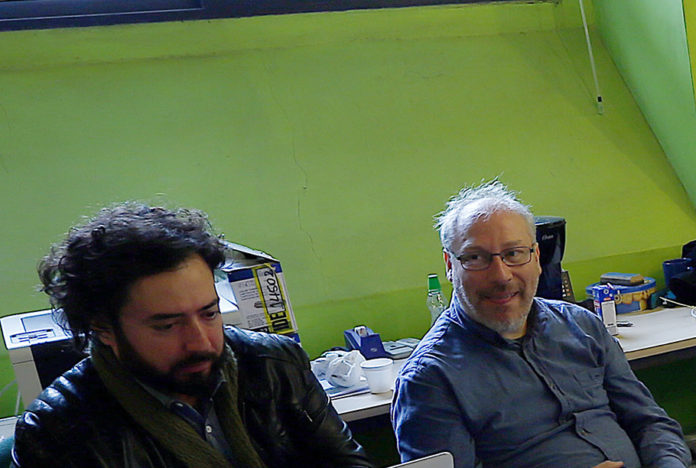*Through simulations, scientists from the Millennium Nucleus Physics of Active Matter managed to reproduce the oscillating movement of sperm in a synthetic system, using a simpler process than the one known until today.
*Until now, it was believed that only sophisticated internal engines could achieve the flagellum movement. This discovery opens a door to a simpler manufacture of microrobots.
Cilia or flagella are structures that look like microscopic hairs that are present in many biological systems and that are used by them to self-propel or to remove things from the environment. The most classic image is that of the sperm cell, which swims to fertilize the ovule thanks to its oscillating tail. That tail is a flagellum and is moved by microscopic motors.
Bacteria, such as Escherichia Coli, are propelled by flagella that oscillate constantly thanks to these motors. Microrobots do the same at a synthetic level by copying this complex biological mechanism of locomotion.
Until recently it was believed that the only way flagella could oscillate was by motors that had rotating parts or an internal clock.
However, two Chilean researchers from the Millennium Nucleus Physics of Active Matter, have just published a study where they show that there are other simpler mechanisms to achieve it. A discovery that opens the possibility of manufacturing microrobots that perform complex tasks without the need of sophisticated engines, says Rodrigo Soto, Director of the Nucleus and one of the authors of the study.
New mechanisms
In their research named: “Active colloidal chains with cilia- and flagella-like motion,” research that will be published in New Journal of Physics magazine, Doctors Rodrigo Soto and Sebastián González took an artificial model to study the physics of this system of locomotion through simulations. “We studied whether it was possible or not to reproduce the movement of sperm flagella with a very simple model of active catalytic particles. These are little balls of gold and platinum, suspended in oxygenated water. In its surface, hydrogen is consumed or produced and that creates movement. We found oscillating structures (like sperm) with only six particles, which is probably the simplest model studied so far,” explains Sebastián González, a postdoctoral researcher at the Nucleus and author of the study.
Rodrigo Soto says that previous studies with gold, platinum and hydrogen peroxide had shown that linear movements were possible. “Now we know that oscillatory movements can also be possible without the need of an engine.”
The two physicists also showed that the artificial system they simulated could carry cargo, the same way as a sperm does in their head by carrying genetic information to fertilize the egg. “The grace of this is that the chain-structure we found has a chemistry that can behave like a solid or mobile thing, so one could externally control when to move or not,” said Sebastián González, who will travel to Germany in June to see the possibilities of experimenting with this colloidal chains that they found.
Future applications
Although the work of these physicists is theoretical and seeks to expand knowledge in this area, its results may have future applications in nanotechnology and medicine.
Rodrigo Soto explains that discovering this simpler mechanism to achieve oscillating sperm-like mobility can allow the creation of simpler micro-robot designs than the current ones. “If you want a microrobot that achieves flagella type movements, you must do it with a motor with bearings, which is super complicated but now you can do a much simpler micro-robot,” he says.
Why do we want to make tiny robots for? Ph.D. Soto indicates that several applications being investigated in medicine seek to put small robots into the bloodstream to focally cure a disease, such as cancer, for example. Other possible applications are in the field of nanotechnology, where it could be possible to create parts of chips that move with a purpose. For example: “mobile parts for cell phones or computers, that make some type of oscillation, that alternately throws things to one side or another. In fact, hybrid solutions that include biological and artificial components are currently being developed in the field of microswimmers, therefore, understand the physics of their systems, their properties, mechanisms or how they behave in different situations, is crucial for its development.”
Watch the artificial microswimmer moving like sperm: https://youtu.be/aJPvXyTuZgg
Read the full study here: http://iopscience.iop.org/article/10.1088/1367-2630/aabe3c
“If you want a microrobot that achieves flagella type movements, you must do it with a motor with bearings, which is super complicated but now you can do a much simpler micro-robot.” Rodrigo Soto
“We found oscillating structures (like sperm) with only six particles, which is probably the simplest model studied so far.” Sebastián González.


